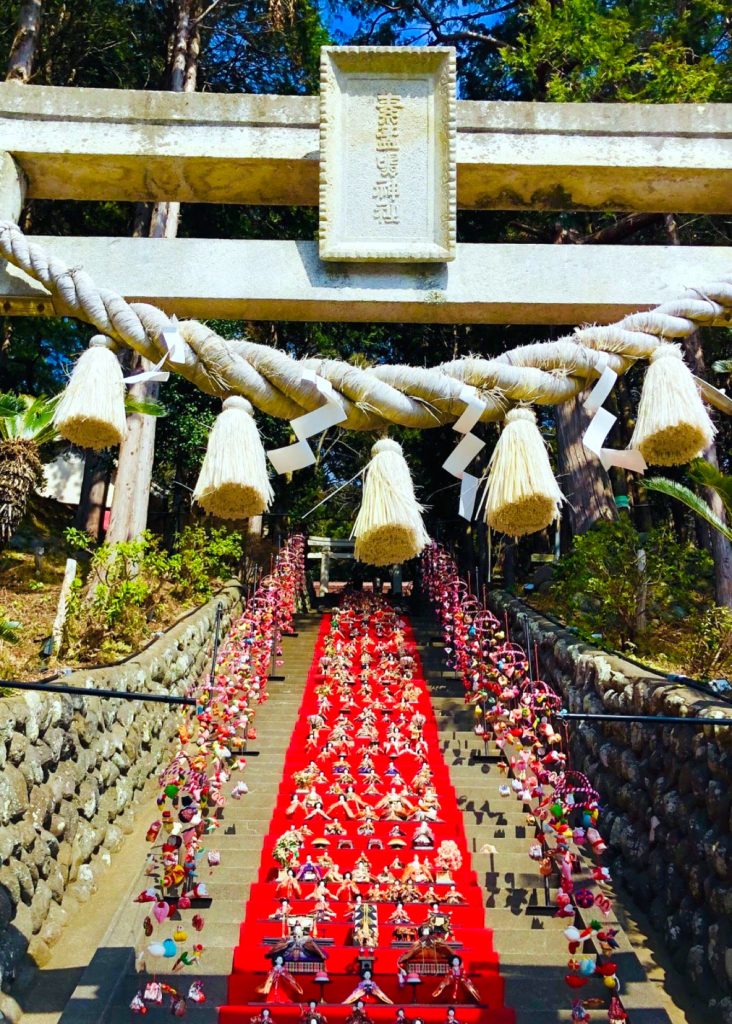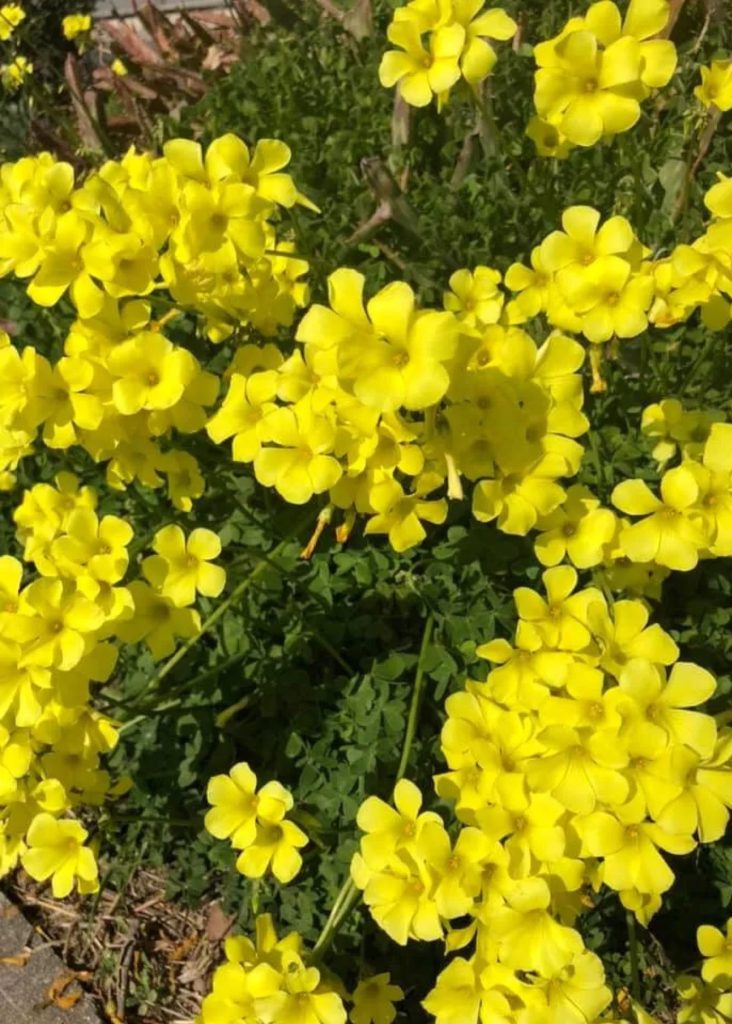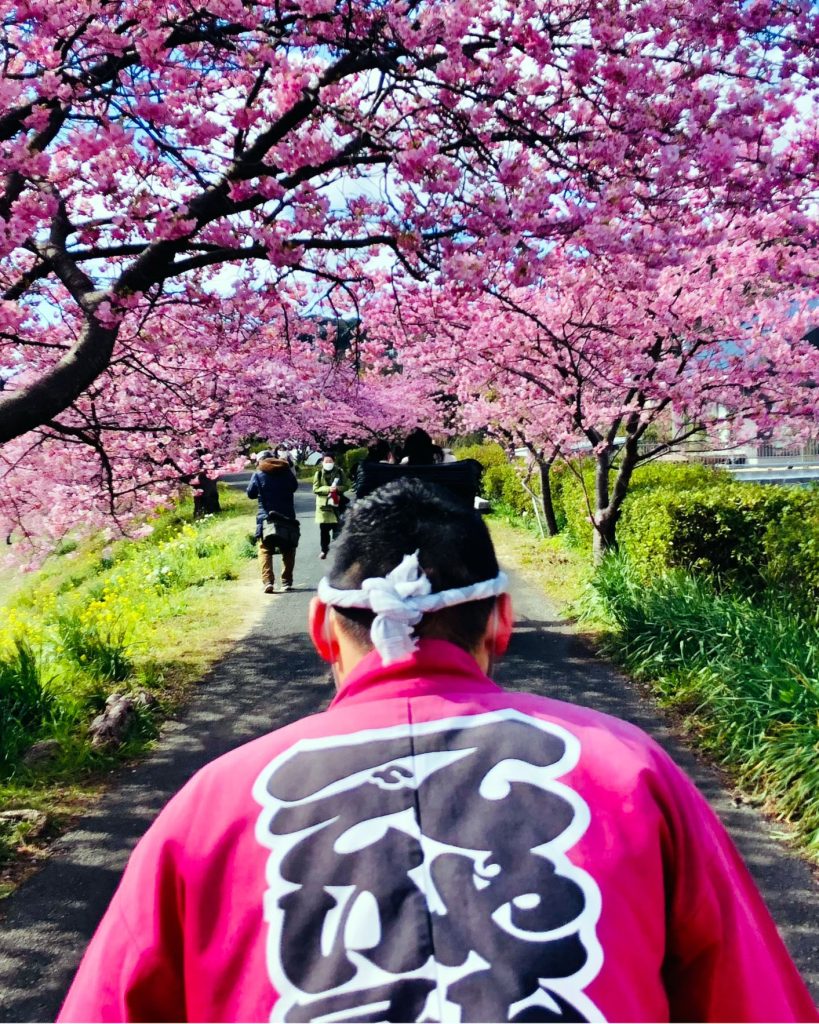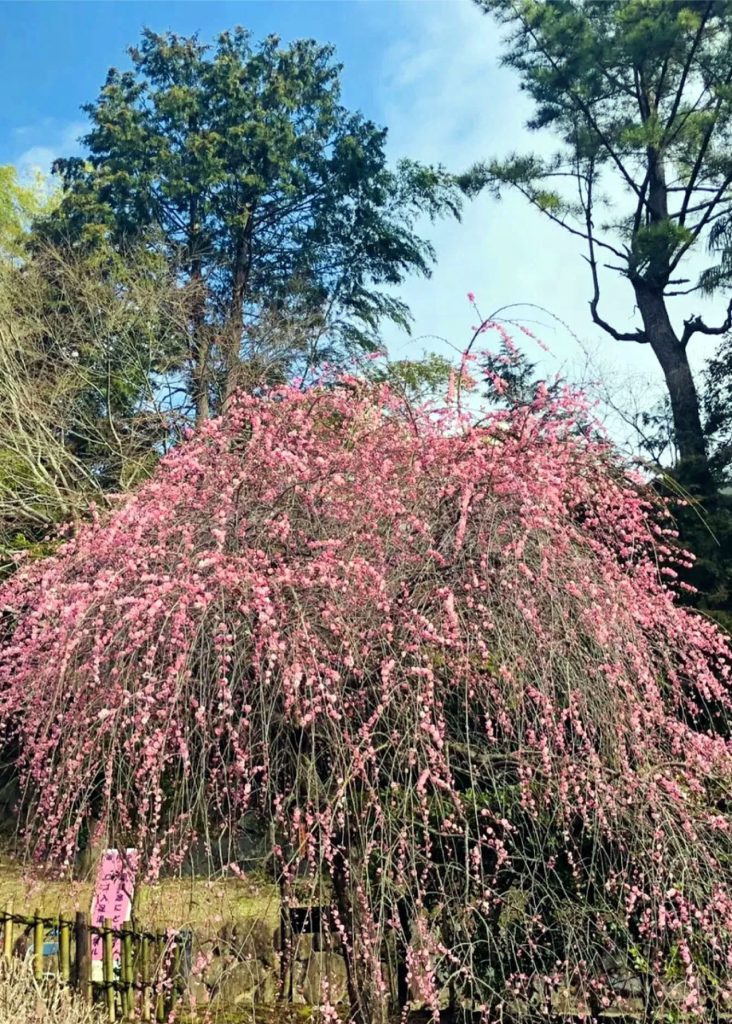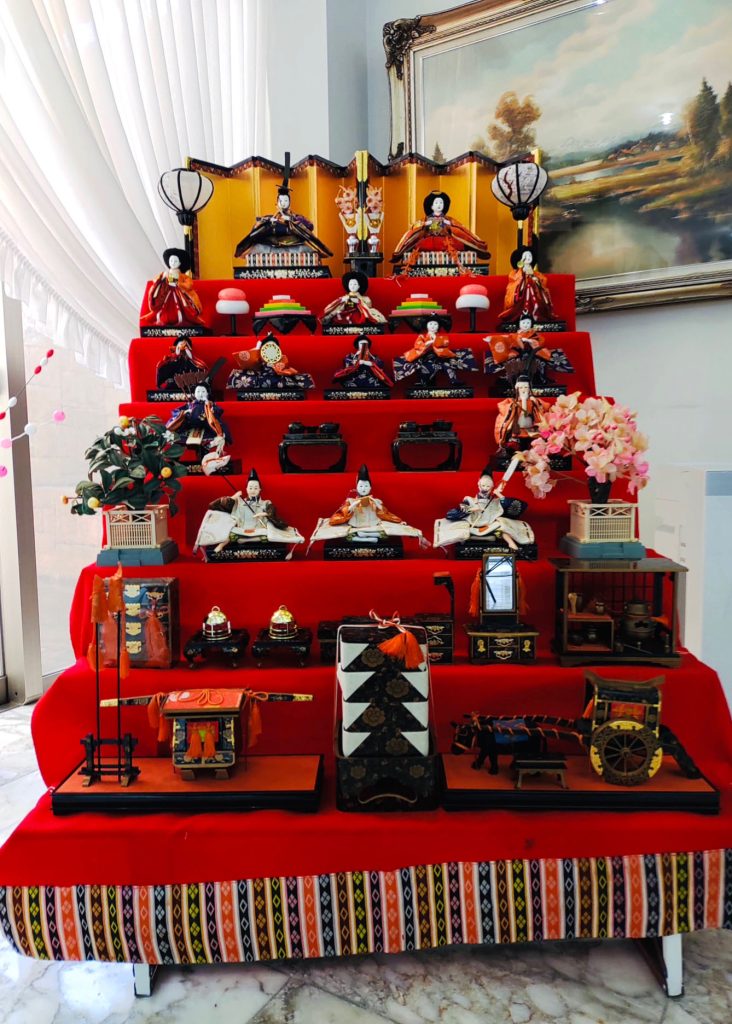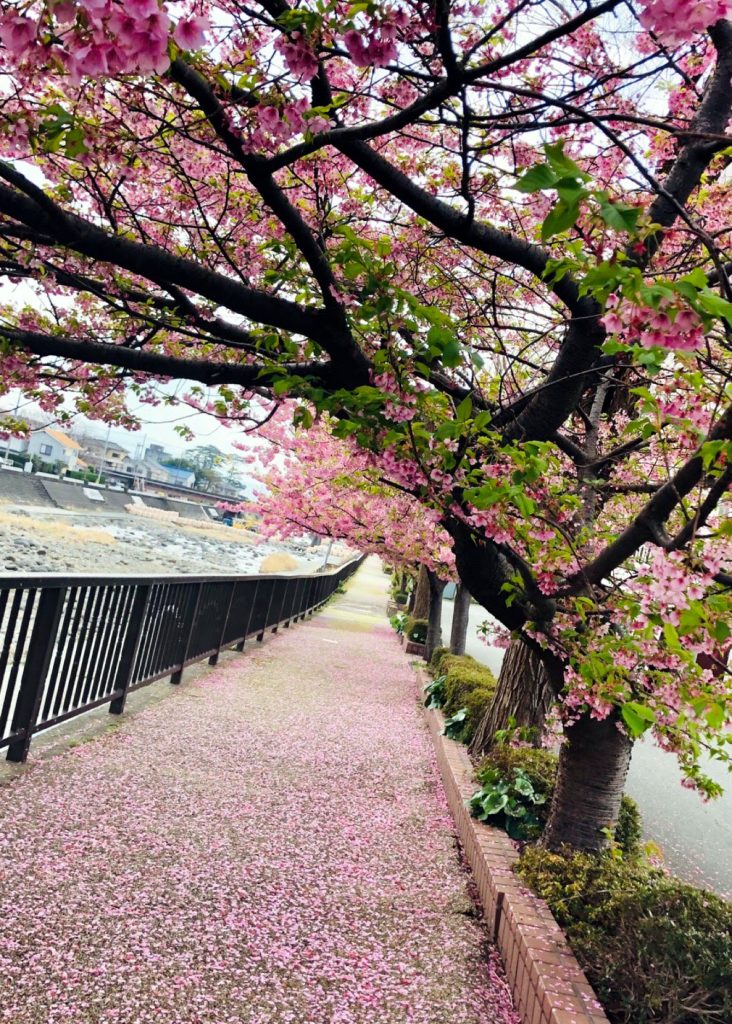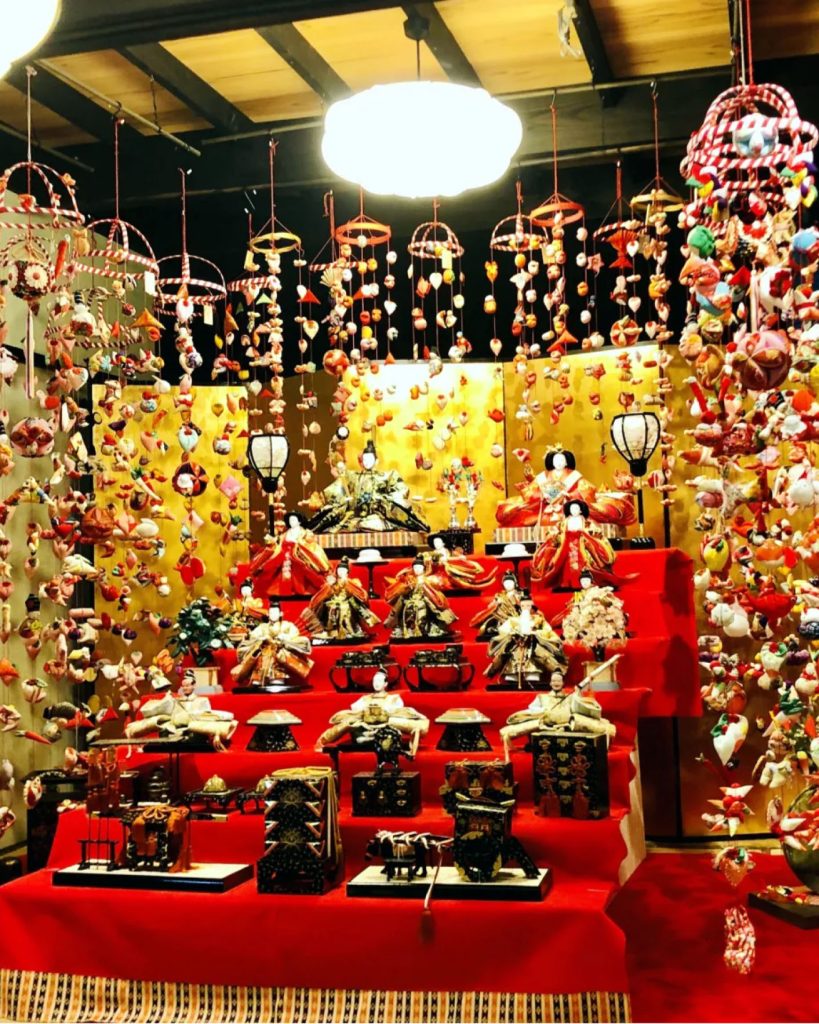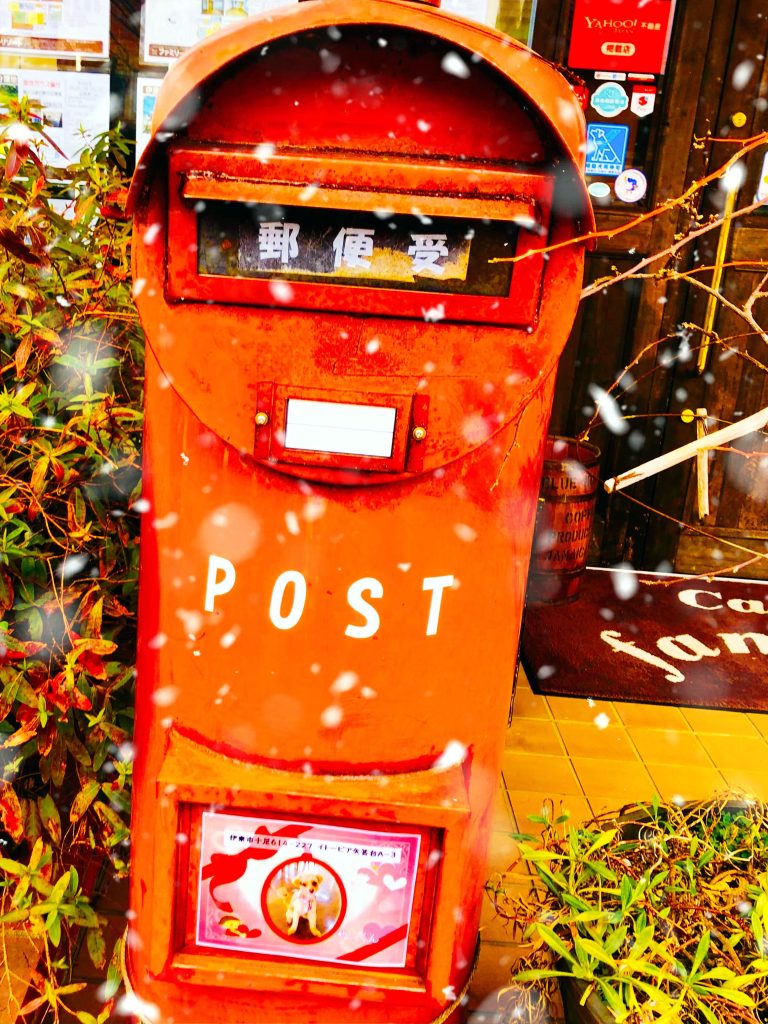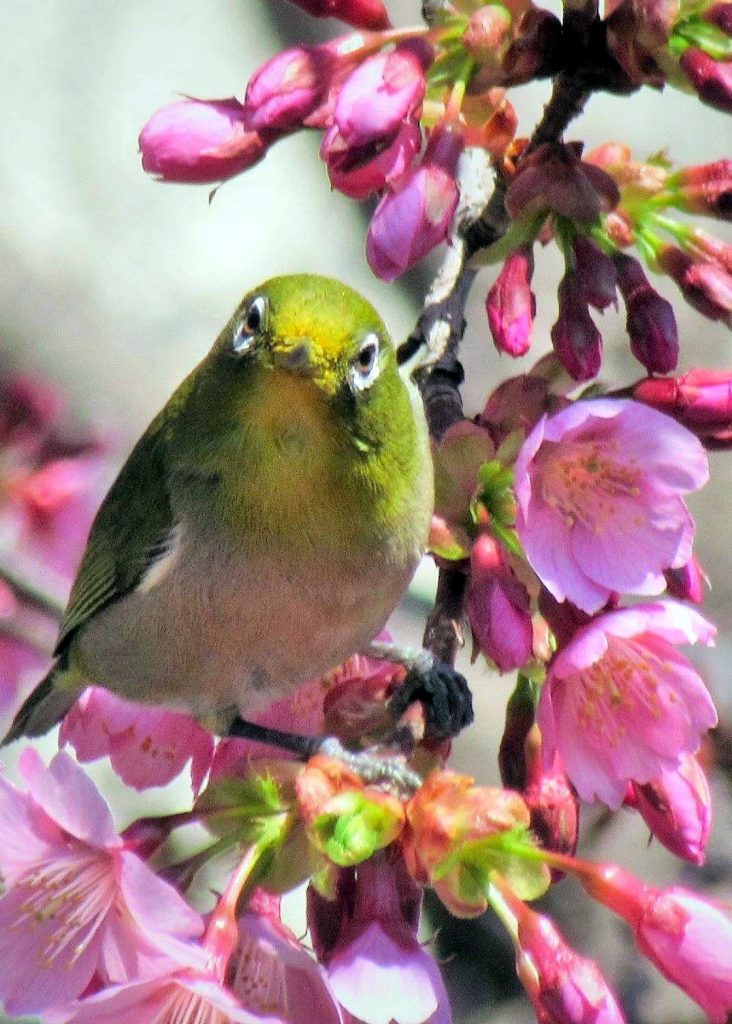
As there is an idiom that says, “Ume and Uguisu”, there is an inseparable relationship between Ume and Uguisu. Surprisingly, many people think that the small birds perched on plum trees are Uguisu. In fact, it would be more accurate to say “mejiro color ” for the “uguisu color ” that I unconsciously used just now. The color of the uguisu’s feathers is a very slightly greenish-brown color, and it does not have a conspicuous green color like the mejiro. When we say “Ume and Uguisu”, we tend to think that it is the uguisu that often come and perch on the plum blossoms. Instead, it is a parable of things that are well-matched and harmonize beautifully. It is also used as a parable of a friendly relationship. The idiom “Ume and Uguisu” symbolically expresses the beauty of spring by combining the chirping of the Japanese bush warbler and the plum blossoms that represent spring.
「梅に鶯」という慣用句がある様に、梅と鶯は切っても切れない関係があります。梅に留まる鶯色の小鳥はてっきり鶯だと思っている人は意外に多いものです。はしなくも今使った「鶯色」も実は「目白色」と言った方が的確な表現です。鶯の羽根の色はごく僅かに緑がかった褐色で、目白の様に目立った緑色はしていません。「梅に鶯」というと、梅の花によく来て留まるのは鶯だというように取られがちですが、そうではなく、取り合わせの良いもの、美しく調和するもののたとえです。仲のよい間柄のたとえとしても使われます。春を代表する梅と鶯の鳴き声を取り合わせて春の美しさを象徴的に表現したのが、「梅に鶯」の慣用句なのです。

